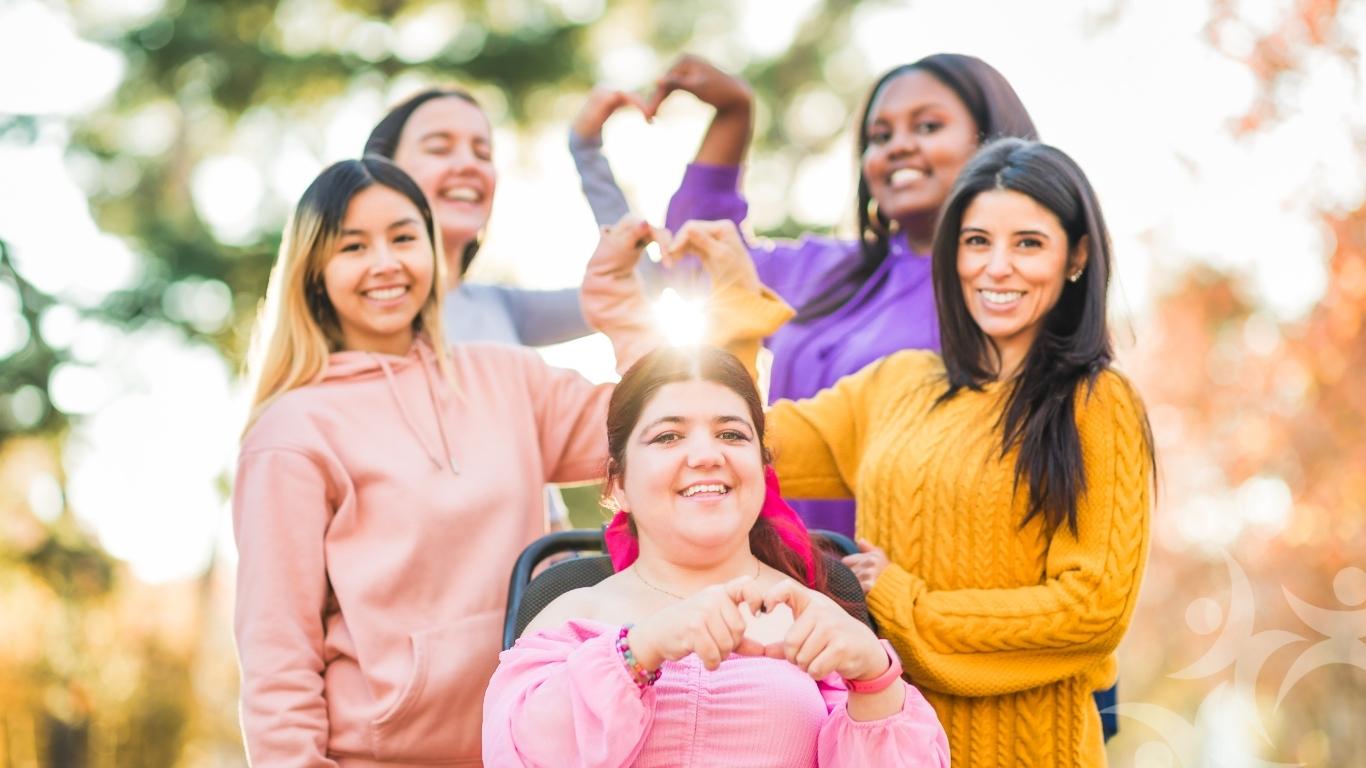 Imagine walking into a classroom where every student — regardless of background, ability, or life experience — is seen, heard, and valued. For many educators, that’s the dream. When schools intentionally create communities of belonging, they create a solid foundation for social-emotional growth, academic success, and lifelong resilience.
Imagine walking into a classroom where every student — regardless of background, ability, or life experience — is seen, heard, and valued. For many educators, that’s the dream. When schools intentionally create communities of belonging, they create a solid foundation for social-emotional growth, academic success, and lifelong resilience.
Research shows that when students feel they belong, they don’t just enjoy school more; they build stronger relationships, perform better academically, and develop the confidence to face challenges head-on.
In this post, we’ll explore why inclusion is a critical component of successful social-emotional learning (SEL) implementation and share practical, research-backed strategies for building inclusive classroom communities.
Why Inclusion Matters for Social-Emotional Growth
An inclusive classroom is more than a shared physical space; it’s a community that:
- Creates a genuine sense of belonging
- Ensures all students can participate fully in the social experience
- Values and celebrates diversity
- Gives every learner a meaningful role
It’s the moment students move beyond simply being present to having real opportunities to contribute, and the support to do so. This sense of belonging is one of the strongest predictors of social and emotional well-being, and it doesn’t happen by accident.
In his guest blog for SENIA, our Executive Director, Sam Drazin, shares how his own experiences as a student shaped his understanding of belonging, and how reframing disability as a natural part of diversity can be the catalyst for schools to move their communities to one that is truly belonging. Read Sam’s story here.
The Impact of Inclusive Communities on Social-Emotional Learning
The data is clear: inclusion isn’t just a nice-to-have; it’s essential.
Students with a strong sense of belonging show higher motivation, stronger self-confidence, and greater engagement in class, all of which are linked to better grades and improved social-emotional functioning. Supportive relationships with peers, teachers, and families lower dropout rates, boost academic achievement, and help students feel emotionally secure.
We’ve seen this firsthand at Del Mar Middle School in the Reed Union School District. When the school began this work, baseline data from the YouthTruth Survey showed only 36% of students with disabilities reporting a sense of belonging. Today, 98% say they feel part of their school community, with similar gains among students from low-income backgrounds and students of color. Families and staff echo these improvements, pointing to stronger relationships and a more inclusive culture. As Brian Lynch, Director of Student Services, explains, “The work with Changing Perspectives is improving practice and outcomes.”
Social-emotional learning programs in PreK–12 settings consistently improve skills, reduce behavior issues, and can lead to an average 11-percentile increase in academic performance. These programs also help reduce bullying, especially for students with disabilities. Integrated classrooms encourage communication, respect, and empathy among all learners, fostering the leadership and life skills students need beyond school.
The takeaway? Authentic inclusion creates the conditions for every student to thrive by ensuring participation, removing barriers, and fostering belonging.

7 Strategies to Build an SEL-Focused Classroom
SEL thrives when a classroom feels like a true community, where students know they are valued, respected, and supported both academically and emotionally. Here’s how to make that happen:
- Start With Relationships
Human connection is the heart of inclusion and belonging. Greet students by name and pair it with a quick check-in. Build in daily time for class meetings, whether through a morning meeting model, closing circle, or advisory model. These moments of togetherness build classroom community collectively and elevate the presence and identity of each student individually. Use morning meetings to strengthen bonds. Show genuine interest in their hobbies, families, or activities. When students feel personally known, trust grows, and trust is a strong predictor of engagement. - Celebrate Diversity
Honor the unique backgrounds, identities, and experiences each student brings. Use culturally responsive strategies and include diverse voices in curriculum materials. Encourage students to share their languages, traditions, and stories. When students see themselves reflected in the classroom, their confidence and connection to learning increase. Consider a bulletin board in your classroom that represents all students. - Make Classroom Rules Together
Move from top-down rules to agreements built with students. Invite them to define shared values such as respectful listening and mutual support, and revisit these values throughout the year. When students help set expectations, they are more likely to follow them and take ownership of the classroom climate. - Teach SEL Explicitly
Inclusion is an outcome, and social-emotional learning skillsets help students to become the inclusive changemakers of tomorrow. Integrate SEL lessons into your daily routine with evidence-based programs like the Changing Perspectives Social-Emotional Learning Curriculum. Model empathy, self-regulation, and decision-making. Reinforce positive behavior with specific and meaningful praise. Students who practice SEL skills in a supportive environment develop empathy and resilience that last a lifetime. - Encourage Student Voice
An inclusive classroom values every voice. Use circle discussions, dialogue journals, and co-led projects to give students safe ways to contribute. Include their input in classroom design and planning. When students know their voices matter, they gain agency and emotional empowerment. - Address Bias and Microaggressions Proactively
Pair celebration of diversity with accountability. Teach about implicit bias in age-appropriate ways. Create safe channels for reporting hurtful behavior and use restorative practices to repair harm. Students learn to navigate conflict with empathy and fairness, creating a respectful community. - Involve Families and the Larger Community
Inclusion and belonging involve all members of the school community! This includes families. Host cultural events, invite guest speakers who reflect student backgrounds, and share regular updates about inclusive practices and SEL goals. These connections between home and school strengthen students’ sense of belonging.
Belonging Isn’t Built in a Day, but Every Day Is a Chance to Build It
Building an inclusive classroom is not a one-time effort; it’s an ongoing commitment to seeing, hearing, and honoring every learner. When educators lead with empathy and intention, they create spaces where students grow both academically and emotionally.
Start small. Stay consistent. And watch your students flourish.
At Changing Perspectives, our tools, training, and resources make it easier to create inclusive, equitable learning environments that benefit students, families, and entire communities.
Together, we can ensure empathy, resilience, and understanding are the cornerstones of every student’s success, and that belonging is a daily practice for every learner.
